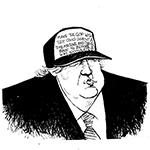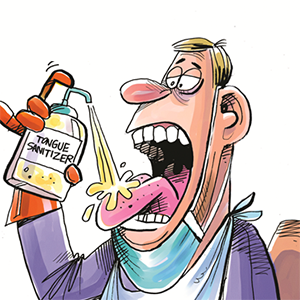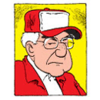Henry Payne: Trump aims to open Japan to US autos with tariffs. It's a tough sell
Published in Automotive News
TOKYO — President Donald Trump arrived here this week for a wide-ranging state visit with new Prime Minister Sanae Takaichi — the same week the Japan Mobility Show opened to media. With its tariff policy, the Trump administration has been determined to open foreign markets like Japan to U.S. automakers.
It's not easy.
In exchange for a 15% U.S. tariff on goods — lower than the previously threatened 25% — Japan this summer agreed to allow the import of American-made cars without its usual, unique safety standards and testing. “Perhaps most importantly, Japan will open their Country to Trade including Cars and Trucks,” Trump wrote on Truth Social.
But as Japan's premier auto exhibition demonstrates, Japan’s nationalistic, right-hand-drive, compact car market is unlike that in the United States, with its large pickups and SUVs. Not a single U.S. brand showed here. Unique safety standards or not, foreign markets can be rocky soil for U.S. automakers to seed sales, say industry insiders, because of vastly different market conditions.
It’s not just Japan. From Tokyo and China to Europe and the United States, countries have different customers and national priorities.
China, for example, has prioritized the manufacture of electric vehicles for geopolitical reasons because the nation is home to 80% of rare earth minerals needed for battery construction. The United States, on the other hand, has the world’s largest fossil fuel reserves, which the Trump administration has encouraged use of to feed popular trucks and SUVs. The European Union has targeted 2035 to eliminate the sale of gas-fired vehicles because of climate-change concerns.
Here in mineral-poor Japan, small gas-powered cars are popular despite the country’s dependence on foreign oil.
“It’s (the) nature of a country where you have large, dense cities where a lot of people live in apartments. People don’t have access to off-street parking (with charging stations) which makes owning an EV challenging,” said Sam Abuelsamid, auto analyst with Guidehouse Insights. “So gas-electric hybrids represent a significant portion of the Japanese market. They are a fuel-efficient technology without having to worry about where to plug in.”
Located in the dramatic Tokyo Big Sight convention center overlooking Tokyo Bay just five miles east of where Trump and Takaichi met, the Japan Mobility Show opened to the public Thursday and runs through Nov. 9. It is markedly similar to the Detroit Auto Show in its focus on home team brands. If the Detroit show is dominated by the Detroit Three, then Tokyo’s floors are the domain of the Japan 10.
The Top 10 brands in the Japanese market, according to the Japan Automotive Dealers Association, are (in order): Toyota, Suzuki, Honda, Nissan, Daihatsu, Mazda, Mitsubishi, Subaru, Lexus and Isuzu. They are all represented here. The only foreign brands on display are Germany's BMW and Mercedes-Benz, Britain’s Mini (owned by BMW), South Korea’s Hyundai and China’s BYD.
So dominant is Toyota that it consumes an entire hall at the Tokyo Big Sight (separated into halls like Detroit’s Huntington Place) along with its Daihatsu, Lexus and Century brands. Combined, the Toyota quartet make up 41% of the market.
“The Japanese are the most nationalistic people on the face of the earth,” said former Ford, Chrysler and Nissan-Renault communications chief Jason Vines, who spent considerable time in Japan in the latter role.
Unlike at the Detroit show (and other big U.S. exhibits like Los Angeles and New York), European luxury manufacturers Mercedes and BMW are represented with big displays. Indeed, after the Japan 10, six of the next 10 are premium, foreign automakers: Mercedes, BMW, Audi, Mini, Volvo and Jeep.
Jeep?
Stellantis NV’s icon is the best-selling U.S. brand in Japan (9,633 sales in 2024, or 0.002% of market share) and is considered a premium buy with a Wrangler Rubicon four-door, for example, costing about $70,000. Vines said that famed brands like Jeep, BMW and Mercedes are coveted by upper-income Japanese in big cities.
“The Japanese love American culture and branded clothing,” the industry veteran said. “Jeep is America. Nothing says America like Jeep.”
Jeep has been a presence in Japan since the post-World War II occupation in 1945, with Mitsubishi licensed to produce the Jeep Willys in 1953. Stellantis employs 141 people across eight Stellantis brands (Jeep, Fiat, Fiat Professional, Abarth, Alfa Romeo, DS, Peugeot and Citroen) with a head office in Tokyo and two vehicle prep centers in Aichi.
Modern Jeep models, imported from the United States and Europe, come in right-hand drive here. Jeep markets include left-lane road countries like Japan, India, Australia and the United Kingdom — thus the costly investment in right-hand drive.
In addition to “localizing” Jeeps with right-hand drive and navigation systems, Stellantis upgrades them to meet Japan’s emissions standards and safety regulations.
They’re investments that U.S. automakers are generally unwilling to make for the eclectic, 4.5 million-unit Japanese market — even though it's the world’s third largest after China and the United States.
“It’s tough for U.S. brands to get penetration here because they don’t make vehicles that fit in this market. U.S. vehicles tend to be too large,” Abuelsamid said.
Tesla Model 3 and Y models are outfitted with right-hand drive, but the Texas-based EV maker is a bit player here in part due to low demand for battery-powered models.
Determined to grab a piece of the premium pie, General Motors Co. has outfitted its all-new Cadillac Lyriq EV with right-hand drive. Exports to Japan began in May at a price of $75,000. Remade as an EV brand, Cadillac is looking to start fresh in Asia and Europe.
"We've previously operated in a niche market, but we'll develop new demand by introducing right-side steering wheels," GM Japan Managing Director Tadashi Wakamatsu told Nikkei Asia.
The streets outside Tokyo’s convention center look very different than those in U.S. cities. Amongst the New York City-like bustle of cabs and lux chariots are schools of tiny, so-called Kei-cars that look like shoeboxes on wheels. The Japan show floor was choked with them from multiple automakers.
“It’s a special segment where the vehicles are restricted in power output to 64 hp and in size to get owners on taxes and registration fees,” Abuelsamid said. “They’re easy to park in Japan’s narrow streets.”
Even Honda’s model lineup is unrecognizable here. Eighty percent of the Tokyo-based brand’s sales are Kei cars. The No. 2-seller is a small minivan called the FREED. It is rare to see an Accord or CR-V here — the brand’s Ohio-made best-sellers in the United States, where Honda sells 40% of its global product.
Japan, by contrast, accounts for just 16% of global Honda sales. Exclusive to the States are its popular, U.S.-made, midsize Pilot and Passport SUVs that don’t come in right-hand drive.
Prior to Trump’s visit to Japan, the government of Prime Minister Takaichi floated the idea of buying a fleet of Ford F-150 trucks as a show of goodwill.
“She has good taste," Trump told reporters. "That’s a hot truck."
Tokyo tastes occasionally run to giant GMC Hummers. But don’t expect a run on F-150s here, signaled Mike Levine, a Ford spokesperson: “We don’t have any dealers in Japan or sell any vehicles there.”
____
©2025 www.detroitnews.com. Visit at detroitnews.com. Distributed by Tribune Content Agency, LLC.








Comments